Calathea plants, with their strikingly beautiful foliage, are a favorite among indoor plant enthusiasts. Known for their vibrant leaf patterns and colors, Calatheas are a great choice for adding a touch of exotic beauty to any space. While they are often considered a bit finicky, with the right care, Calathea plants can thrive and become a stunning centerpiece in your home. This guide will provide you with all the information you need to grow and care for Calathea plants successfully.
Understanding Calathea Plants
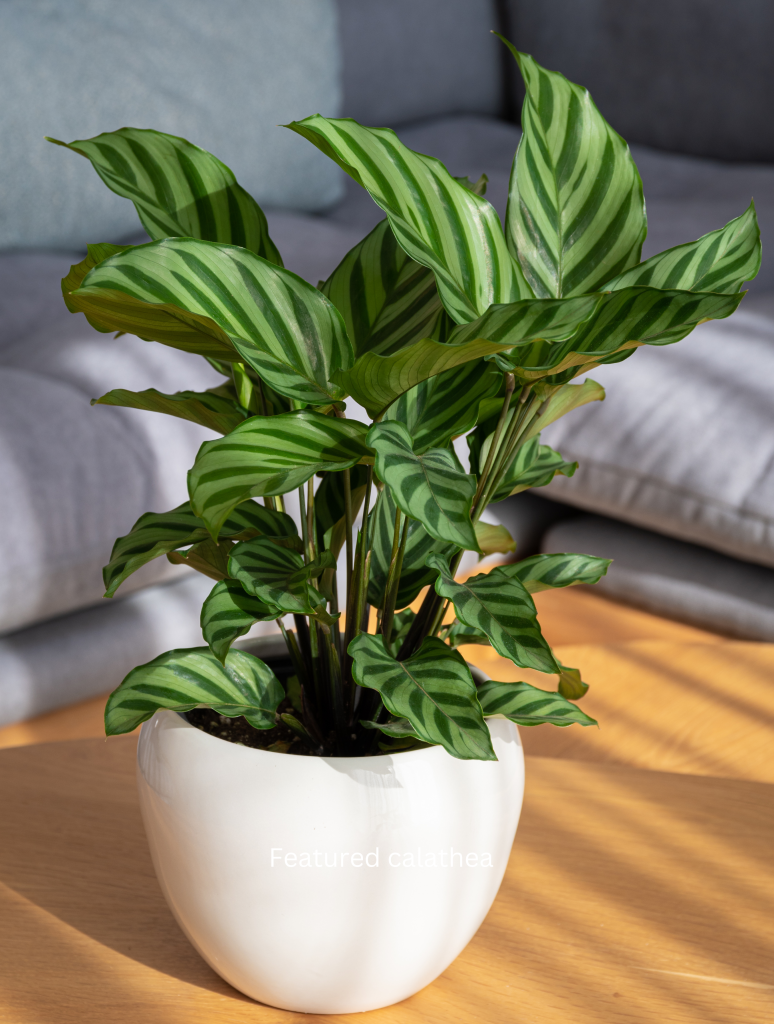
Calathea plants belong to the Marantaceae family and are native to the tropical regions of South America. They are often referred to as “prayer plants” because their leaves tend to fold up at night, resembling praying hands. This unique movement is called nyctinasty.
Common Types of Calathea
There are many varieties of Calathea, each with distinct leaf patterns and colors. Here are a few popular types:
1. Calathea Orbifolia
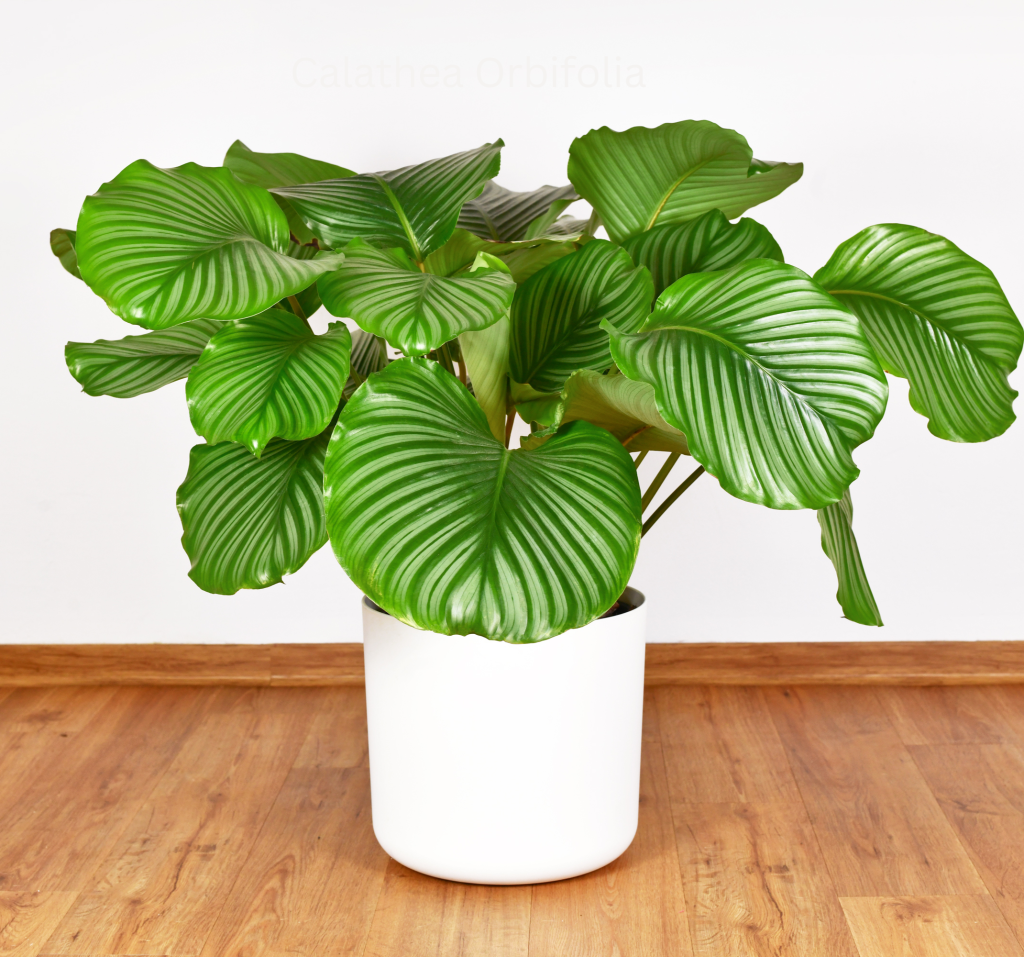
- Features large, round leaves with silver and green stripes.
2. Calathea Medallion
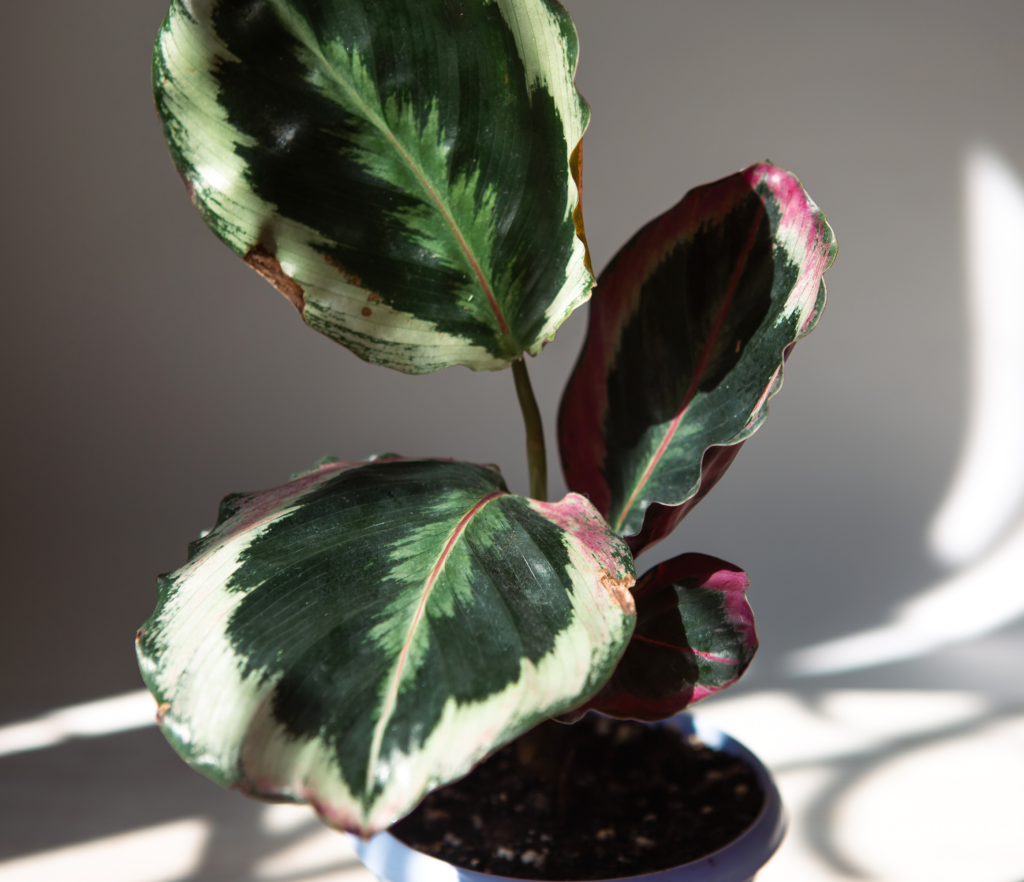
- Known for its large, oval leaves with dark green tops and purple undersides.
3. Calathea Lancifolia (Rattlesnake Plant)
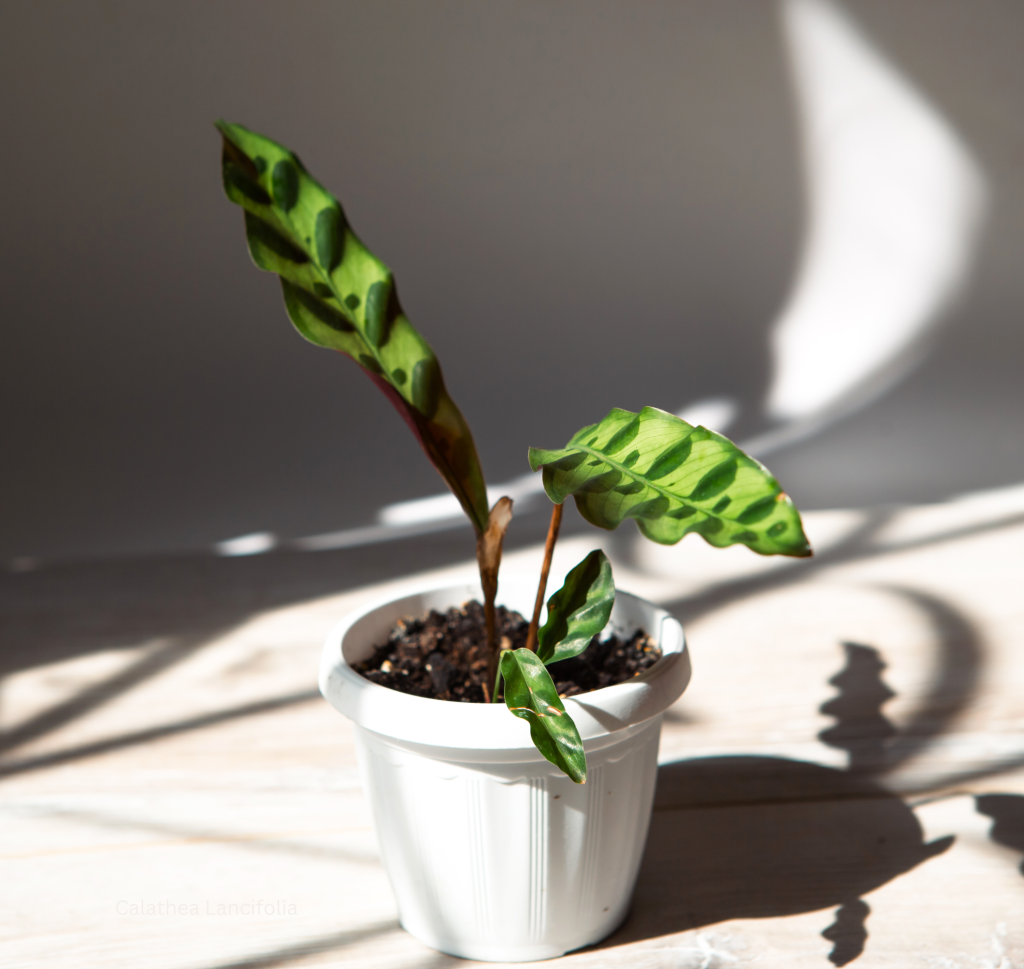
- Has long, narrow leaves with dark green spots and wavy edges.
4. Calathea Makoyana (Peacock Plant)
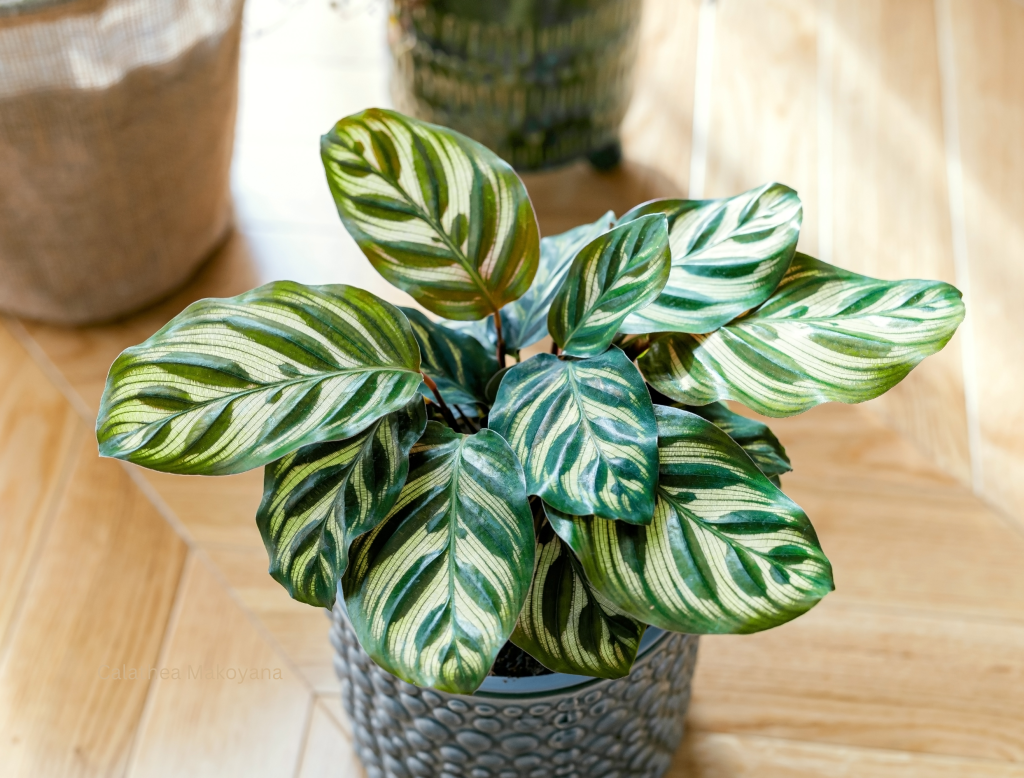
- Displays light green leaves with dark green feather-like patterns.
Ideal Growing Conditions for Calathea
To ensure your Calathea thrives, it’s essential to mimic its natural tropical environment:
Light
- Indirect Light: Calatheas prefer bright, indirect light. Direct sunlight can scorch their delicate leaves, so it’s best to place them in a spot with filtered light.
- Low to Moderate Light: Some Calathea varieties can tolerate lower light conditions, making them suitable for indoor environments.
Temperature
- Warmth: Calatheas thrive in temperatures between 65-80°F (18-27°C). They are sensitive to cold drafts and sudden temperature changes, so keep them away from windows and doors during the winter.
Humidity
- High Humidity: Calatheas require high humidity to thrive. Aim for humidity levels above 60%. Use a humidifier or place a tray of water near the plant to increase humidity levels. Regular misting can also help.
Watering and Soil
Proper watering and soil selection are crucial for healthy Calathea plants:
Watering
- Consistent Moisture: Keep the soil consistently moist but not waterlogged. Water the plant when the top inch of soil feels dry. Calatheas are sensitive to fluoride and chlorine in tap water, so it’s best to use distilled or filtered water.
- Avoid Overwatering: Ensure the pot has drainage holes to prevent water from accumulating at the bottom, which can lead to root rot.
Soil
- Well-Draining Soil: Use a well-draining potting mix rich in organic matter. A mix designed for African violets or a blend of potting soil, peat, and perlite works well for Calatheas.
Feeding and Fertilizing
Regular feeding ensures that your Calathea receives the nutrients it needs to grow and thrive:
- Balanced Fertilizer: Use a balanced, water-soluble fertilizer every 4-6 weeks during the growing season (spring and summer). Reduce feeding during the dormant period (fall and winter).
Pruning and Maintenance
Maintaining your Calathea involves regular pruning and care:
Pruning
- Remove Dead Leaves: Trim away any yellow or brown leaves to maintain the plant’s appearance and prevent disease.
- Cleaning: Wipe the leaves regularly with a damp cloth to remove dust and keep them looking vibrant.
Propagation
Calatheas can be propagated through division:
- Remove from Pot: Gently remove the plant from its pot and carefully separate the roots.
- Divide Rhizomes: Divide the plant into smaller sections, ensuring each section has roots and leaves.
- Repot: Plant each section in a separate pot with fresh potting mix. Water thoroughly and place in a humid environment.
Common Problems and Solutions
Calatheas can encounter several common issues, but with proper care, they can be managed effectively:
Yellowing Leaves: This can be a sign of overwatering, underwatering, or poor water quality. Adjust your care routine accordingly.
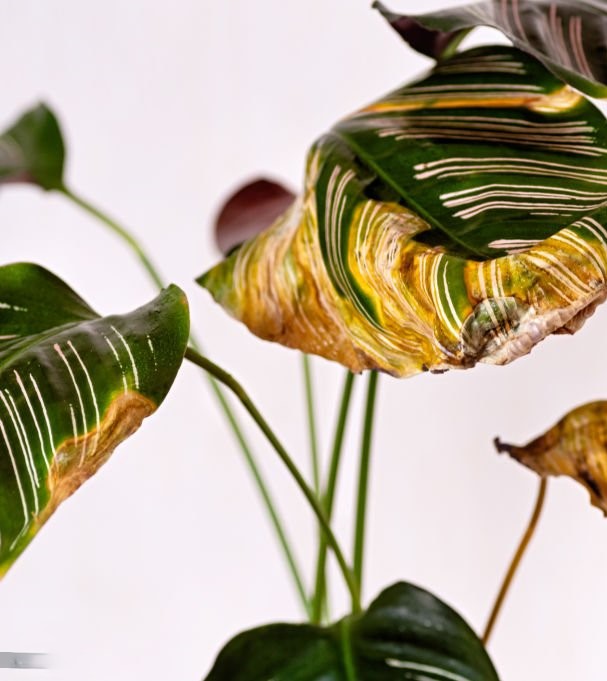
Crispy Leaf Edges: Often caused by low humidity or water quality issues. Increase humidity and use distilled or filtered water.
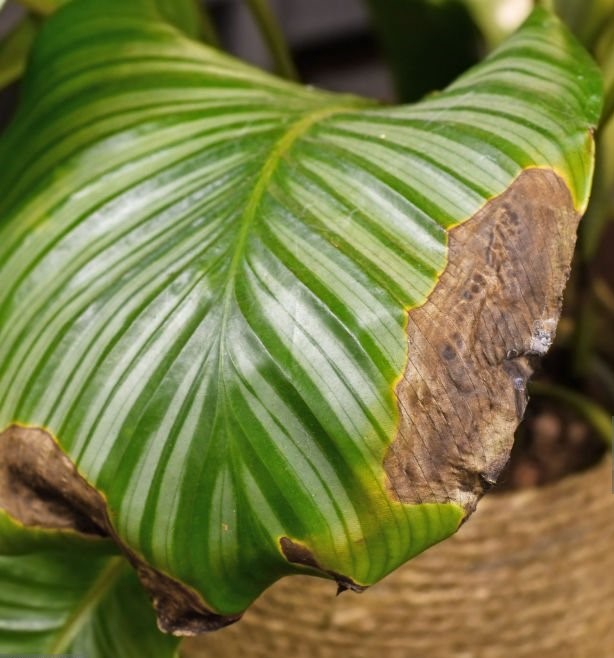
Pests: Keep an eye out for pests like spider mites, mealybugs, and aphids. Treat infestations with insecticidal soap or neem oil.
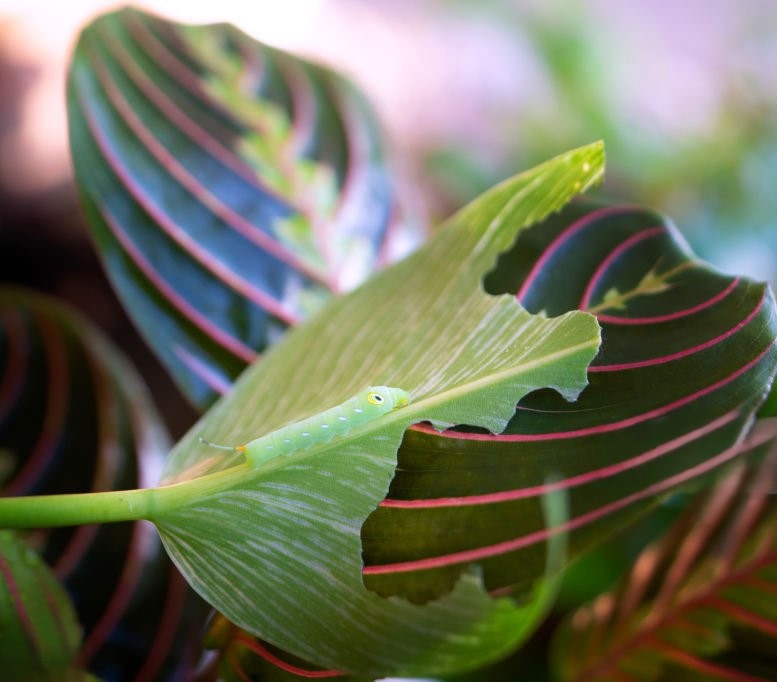
Benefits of Growing Calathea Plants
Beyond their beauty, Calathea plants offer several benefits:
- Air Purification: Calatheas help improve indoor air quality by removing toxins from the air.
- Decorative Appeal: Their vibrant, patterned leaves add a touch of exotic beauty and elegance to any space.
- Stress Relief: Caring for plants like Calatheas can be a relaxing and rewarding hobby, reducing stress and improving mental well-being.
Conclusion
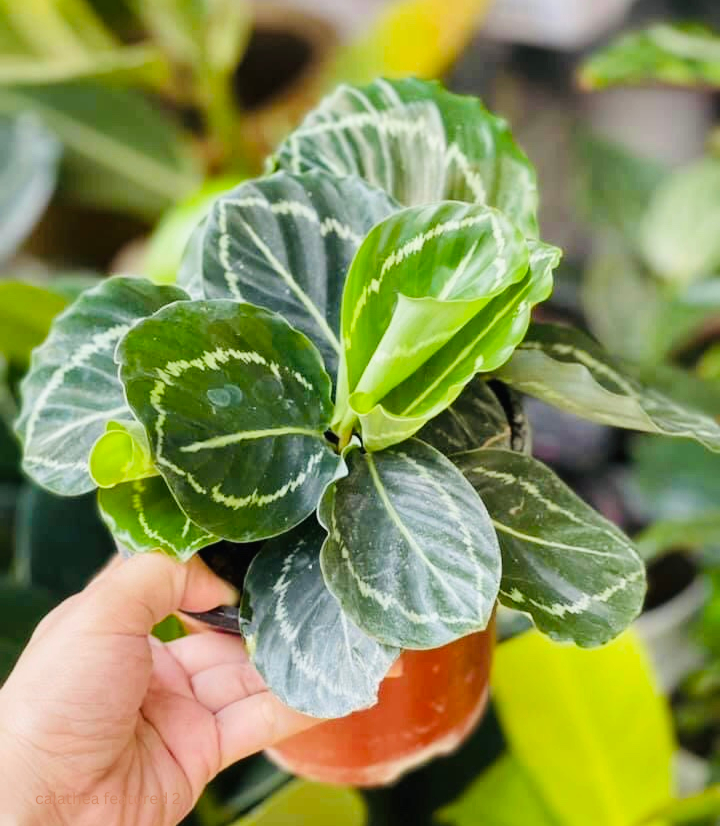
Calathea plants are a stunning and rewarding addition to any indoor plant collection. With their vibrant, patterned foliage and relatively easy care requirements, they can bring a touch of tropical beauty to your home. By providing the right growing conditions and care, you can enjoy the lush and captivating presence of Calathea plants for years to come.



